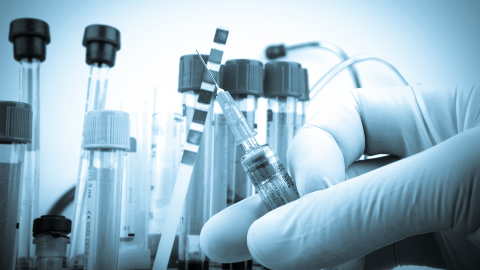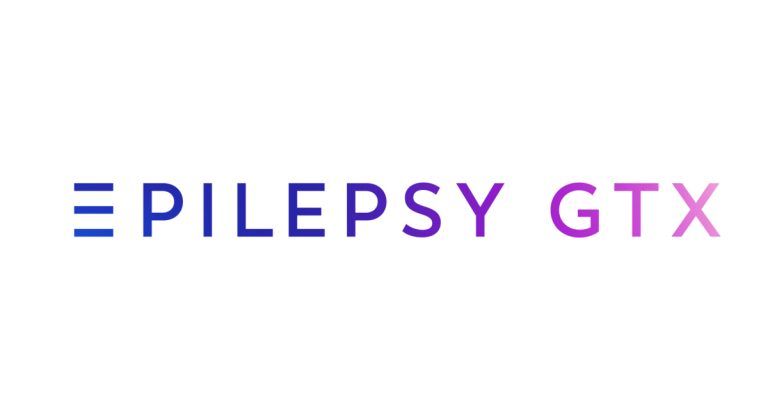预约演示
更新于:2025-05-07
Kv1.1
更新于:2025-05-07
基本信息
别名 AEMK、HUK1、KCNA1 + [9] |
简介 Voltage-gated potassium channel that mediates transmembrane potassium transport in excitable membranes, primarily in the brain and the central nervous system, but also in the kidney (PubMed:19903818, PubMed:8845167). Contributes to the regulation of the membrane potential and nerve signaling, and prevents neuronal hyperexcitability (PubMed:17156368). Forms tetrameric potassium-selective channels through which potassium ions pass in accordance with their electrochemical gradient. The channel alternates between opened and closed conformations in response to the voltage difference across the membrane (PubMed:19912772). Can form functional homotetrameric channels and heterotetrameric channels that contain variable proportions of KCNA1, KCNA2, KCNA4, KCNA5, KCNA6, KCNA7, and possibly other family members as well; channel properties depend on the type of alpha subunits that are part of the channel (PubMed:12077175, PubMed:17156368). Channel properties are modulated by cytoplasmic beta subunits that regulate the subcellular location of the alpha subunits and promote rapid inactivation of delayed rectifier potassium channels (PubMed:12077175, PubMed:17156368). In vivo, membranes probably contain a mixture of heteromeric potassium channel complexes, making it difficult to assign currents observed in intact tissues to any particular potassium channel family member. Homotetrameric KCNA1 forms a delayed-rectifier potassium channel that opens in response to membrane depolarization, followed by slow spontaneous channel closure (PubMed:19307729, PubMed:19903818, PubMed:19912772, PubMed:19968958). In contrast, a heterotetrameric channel formed by KCNA1 and KCNA4 shows rapid inactivation (PubMed:17156368). Regulates neuronal excitability in hippocampus, especially in mossy fibers and medial perforant path axons, preventing neuronal hyperexcitability. Response to toxins that are selective for KCNA1, respectively for KCNA2, suggests that heteromeric potassium channels composed of both KCNA1 and KCNA2 play a role in pacemaking and regulate the output of deep cerebellar nuclear neurons (By similarity). May function as down-stream effector for G protein-coupled receptors and inhibit GABAergic inputs to basolateral amygdala neurons (By similarity). May contribute to the regulation of neurotransmitter release, such as gamma-aminobutyric acid (GABA) release (By similarity). Plays a role in regulating the generation of action potentials and preventing hyperexcitability in myelinated axons of the vagus nerve, and thereby contributes to the regulation of heart contraction (By similarity). Required for normal neuromuscular responses (PubMed:11026449, PubMed:17136396). Regulates the frequency of neuronal action potential firing in response to mechanical stimuli, and plays a role in the perception of pain caused by mechanical stimuli, but does not play a role in the perception of pain due to heat stimuli (By similarity). Required for normal responses to auditory stimuli and precise location of sound sources, but not for sound perception (By similarity). The use of toxins that block specific channels suggest that it contributes to the regulation of the axonal release of the neurotransmitter dopamine (By similarity). Required for normal postnatal brain development and normal proliferation of neuronal precursor cells in the brain (By similarity). Plays a role in the reabsorption of Mg(2+) in the distal convoluted tubules in the kidney and in magnesium ion homeostasis, probably via its effect on the membrane potential (PubMed:19307729, PubMed:23903368). |
关联
5
项与 Kv1.1 相关的药物靶点 |
作用机制 Kv1.1调节剂 |
非在研适应症- |
最高研发阶段临床前 |
首次获批国家/地区- |
首次获批日期1800-01-20 |
作用机制 CAMK2A modulators [+1] |
在研机构 |
原研机构 |
在研适应症 |
非在研适应症- |
最高研发阶段临床前 |
首次获批国家/地区- |
首次获批日期1800-01-20 |
WO2023194412
专利挖掘靶点 |
作用机制- |
在研适应症 |
非在研适应症- |
最高研发阶段药物发现 |
首次获批国家/地区- |
首次获批日期1800-01-20 |
1
项与 Kv1.1 相关的临床试验NCT00185003
Blockade of Vascular Potassium Channels During Human Endotoxemia
Background: Activation of NO-synthase and vascular potassium (K) channels may play a role in the sepsis-induced attenuated sensitivity to norepinephrine. We examined whether various K channel blockers and NO-synthase inhibition could restore norepinephrine sensitivity during experimental human endotoxemia.
开始日期2003-01-01 |
100 项与 Kv1.1 相关的临床结果
登录后查看更多信息
100 项与 Kv1.1 相关的转化医学
登录后查看更多信息
0 项与 Kv1.1 相关的专利(医药)
登录后查看更多信息
1,035
项与 Kv1.1 相关的文献(医药)2025-04-01·Current Opinion in Neurology
State-of-the-art gene therapy in epilepsy
Review
作者: Walker, Matthew C
2025-04-01·Journal of Biological Chemistry
A novel spider toxin as a selective antagonist of the Kv1 subfamily of voltage-gated potassium channels through gating modulation
Article
作者: Chen, Minzhi ; Liu, Zhonghua ; Xiao, Zhen ; Hu, Zhaotun ; Zhao, Piao ; You, Qian ; Li, Huazhen ; Chen, Bo ; Liu, Hongrong ; You, Xia ; Zhou, Xi
2025-04-01·Journal of Biochemical and Molecular Toxicology
FTO‐mediated m6A Methylation of KCNAB2 Inhibits Tumor Property of Non‐Small Cell Lung Cancer Cells and M2 Macrophage Polarization by Inactivating the PI3K/AKT Pathway
Article
作者: Sun, Zhiguang ; Niu, Jieting ; Li, Yanguang ; Liu, Junfeng
10
项与 Kv1.1 相关的新闻(医药)2023-09-06
Relay Therapeutics might not have been doing well recently, with the latest US stock market price being $11 and a market capitalization of around $1.3 billion, a reduction of three-quarters from its peak. As of the end of the first quarter in 2023, Relay Therapeutics held cash and cash equivalents of $937.8 million, lower than the $1 billion at the end of 2022. The company anticipates that these funds will support operations until 2025.
Relay Company PipelineIn April of this year, Relay Therapeutics announced the early-stage clinical data of RLY-2608, which led to a 40% plummet in its stock price. RLY-2608 is an isoform-selective PI3K inhibitor, a type of drug that faces challenges in safety and effectiveness, and the FDA has previously issued a black box warning for it. In the phase 1 trial of RLY-2608, only one patient's partial response was observed, and the optimal dose of RLY-2608 has yet to be determined, introducing uncertainty to the drug's safety and efficacy. Although no reports of dose-limiting toxicity (DLT) have emerged so far, unexpected adverse reactions may occur as the drug is still in the early stages of clinical trials, and as the research continues.
RLY4008 Clinical DataRelay company has two other promising assets. Firstly, RLY-4008 (see above image), a small molecule inhibitor, targets FGFR2 in patients with advanced or metastatic solid tumors with FGFR2 alterations. Preliminary data from its first human trial shows marked inhibition of FGFR2 without the limitation of off-target toxicity (such as hyperphosphatemia). Following discussions with the FDA in 2022, Relay chose to continue the single-arm trial design for FGFR2 fusion CCA treatment-naïve patients to expedite approval. RLY-4008 has received CCA orphan drug designation from both the FDA and EMA.
Information collected from the synapse database up until May 26, 2023, shows a recommended Phase 2 dose of 70 mg QD. For the FGFRi-naïve CCA f/r group, the ORR is as high as 55%. For the Prior-FGFRi CCA f/r group, the ORR is just 14%, indicating a significant decline in ORR among patients who have previously undergone FGFRi treatment. The most common TRAEs at different dosages are low-grade PPE (57%), stomatitis (56%), dry mouth (38%), hair loss (28%), and dry eyes (22%).
Secondly, GDC-1971 (previously RLY-1971) is another main asset of Relay. This drug targets SHP2 in patients with advanced or metastatic solid tumors. The phase Ia trial was completed with its enrollment in 2022. Relay reached a collaboration with Genentech on the development and commercialization of GDC-1971.
Combination use of GDC-1971 with Osimertinib or CetuximabAs Novartis’ standalone SHP2 clinical trial fails due to insufficient effectiveness, many companies have been actively pursuing combinatory therapies. As shown in the above figure, an Ib phase study released in July 2023 found in the intelligence database aims to evaluate the safety, pharmacokinetics, and effectiveness of GDC-1971 and Osimertinib in the treatment of inoperable locally advanced or metastatic non-small cell lung cancer, or in combination with cetuximab in the treatment of metastatic colorectal cancer. The clinical trial recruited 172 patients and is expected to conclude by the end of December 2026. The primary endpoints are the percentage of participants experiencing adverse events and the number of patients exhibiting dose-limiting toxicity.
All the three inhibitors mentioned above from Relay come from D.E. Shaw (Chief Scientist at DESRES), with each drug having a clear differentiation direction, targeting a specific subtype of a particular protein with high selectivity. The three drugs are FGFR2 inhibitor RLY-4008, PI3Kα structuring inhibitor RLY-2608, and SHP2 inhibitor RLY-1971.
In addition, D.E. Shaw has developed the small molecule inhibitor DES-7114 for autoimmune and inflammatory diseases. On June 13, 2022, D.E. Shaw Research announced a global exclusive licensing agreement with Eli Lilly for the clinical development and commercialization of Kv1.3 inhibitor DES-7114. Eli Lilly will pay an upfront fee of $60 million, potential development and commercial milestones up to $475 million, and a royalty on global sales.
Challenges in the Development of Kv1.3 Blockers: Strong Selectivity Required for Multiple SubtypesKV1.3 voltage-gated potassium channels participate in many physiological processes in the plasma membrane and mitochondria, primarily in the immune and nervous systems. Therapies targeting KV1.3 channels using specific peptides and small molecule inhibitors have shown enormous potential in treating cancer and autoimmune diseases (such as multiple sclerosis, type I diabetes, psoriasis, contact dermatitis, rheumatoid arthritis, and myasthenia gravis). However, so far, no compounds targeting KV1.3 have been approved for marketing. Some small molecule inhibitors with a clear SAR (Structure-Activity Relationship) have been optimized as selective inhibitors delivered to mitochondria, providing therapeutic potential for treating cancer and autoimmune diseases.
T-cell activation associated with Kv1.3 ChannelIn 1999, small molecules WIN17317-3 and CP-339818 were discovered to target the Kv1.3 channel. However, these molecules lack the selectivity and specificity for the channel, apart from the Kv1.3 channel they have blocking effects on sodium ion channels and Kv1.4 channels, thus leading to potential side effects. Subsequently, various small molecules were discovered, but all failed to adequately address the issue of selectivity. Apart from inhibiting sodium ion channels and Kv1.4, they also produce a block on Kv1.1 and Kv1.2.
Professor D.E. Shaw has stated that DES-7114 can inhibit the ion channel protein Kv1.3 in a highly selective manner. Preclinical studies have confirmed its effectiveness in various models of chronic inflammation and autoimmune diseases (including ulcerative colitis, Crohn's disease, and atopic dermatitis), and it has successfully completed Phase I clinical trials in healthy volunteers in early 2022. However, a year and a half later, no results of DES-7114 clinical trials have been reported.
Clinical stage Kv1.3 blockersAnalyzing the indications, as shown in Figure below, the current clinical indications under study are all in the direction of autoimmunity, specifically psoriasis, psoriatic arthritis, and atopic dermatitis.
Therapeutic Indication Heat MapRelated Patents of DES-7114A total of 82 applications were found in the synapse database associated with D. E. Shaw Research and Kv1.3, with 11 INPADOC family applications, predominantly applied in 2022 (two applications in March and May), 2020 (five applications), 2021 (one application) and 2023 (two applications). Moreover, the DES-7114 entered phase I clinical trials in January 2022. As early as September 2013, D.E. Shaw Research had disclosed a method for screening voltage-gated proteins. The structure of the clinical molecule DES-7114 is not yet disclosed. Clues could be extracted from six INPADOC family applications in 2021 and 2020.
The six patents are: WO2022076285, WO2021071832, WO2021071812, WO2021071802, WO2021071803, and WO2021071821. The synthetic complexity of the structures in these patents is relatively low, although most of the compounds bear several chiral centers. Some fragments and core structures are relatively novel and worth attention.
However, most compounds disclosed in these patents only display IC50 data and hERG data regarding the inhibition of the Kv1.3 channel, and are only in ranges. Additionally, there is no selectivity data for other channels, such as Kv1.1 and Kv1.2, thus the inference of specific structures remains challenging.
Schematic Diagram of Synapse Database Patent SearchConclusionRelay Therapeutics is a well-known drug discovery company in recent years, characterized by computational chemistry, with three drugs in its pipeline all from D.E. Shaw. Although two of Relay's current three clinical compounds have had some hiccups in clinical trials, its drug discovery platform characterized by molecular dynamics has greatly promoted drug development.
In the structural type exploration of the Kv1.3 channel blocker, it has been difficult for small molecules to achieve selectivity for Kv1.1 and Kv1.2 for more than 20 years. D.E. Shaw Research has extensive experience in differentiated targeting of ion channel protein subtypes. In addition to the Kv1.3 channel protein, there are also multiple published patents related to the TRPA1 cationic channel protein.
According to intelligence gathered from the Synapse database, Kv1.3 blockers are mainly used clinically for the treatment of autoimmune diseases. In order to develop safer therapeutic drugs, it is necessary to pay close attention to the compound's selectivity for Kv1X channel subtypes (such as the Kv1.1 channel and Kv1.2 channel).
Reference
1.https://seekingalpha.com/article/4620984-relay-therapeutics-stock-market-may-be-prematurely-dismissing-rly-2608.
2.Špela Gubič et.al, Discovery of KV1.3 ion channel inhibitors:Medicinal chemistry approaches and challenges.Med Res Rev. 2021;41:2423–2473.
3.Antonio Felipe et.al; Fighting rheumatoid arthritis: Kv1.3 as a therapeutic target.Biochemical Pharmacology 165 (2019) 214-220.
2023-09-05
Relay Therapeutics最近的日子可能不太好过,美股市场最新股价11块,市值13亿美金左右,较巅峰期市值缩水了4分之3。截至2023年第一季度末, Relay Therapeutics持有9.378亿美元的现金、现金等价物,低于2022年底的10亿美元。该公司预计这些资金将支持到2025年的运营。
今年4月份,Relay Therapeutics公布了RLY2608的早期临床数据,股价随即大跌40%,RLY-2608是一种异构体选择性PI3K抑制剂,此类药物在安全性和有效性方面都存在挑战,FDA也曾给予黑框警告。RLY2608的一期试验中仅观察到一个患者的部分反应,且RLY-2608的最佳剂量也未确定,这给药物的安全性和有效性带来了不确定性。虽然到目前为止还没有剂量限制性毒性(DLT)的报告,由于仍处于临床试验的早期阶段,随着研究的继续,可能会出现意想不到的不良反应。
Relay公司还有另外两个有前景的资产。首先是RLY-4008(见图2),小分子抑制剂,可靶向晚期或转移性FGFR2改变的实体瘤患者的FGFR2。其首次人体试验的初步数据显示,对FGFR2具有明显的抑制作用,而不受脱靶毒性的限制(如高磷酸血症)。在2022年与FDA讨论后,Relay选择继续进行FGFR2融合CCA treatment-naïve患者的单臂试验设计,以加快审批速度。RLY-4008已获得FDA和EMA的CCA孤儿药指定。
在新药情报库中搜集到2023年5月26号的信息显示,二期推荐剂量为70 mg QD;在分组FGFRi-naïve CCA f/r中,ORR高达55%;在分组Prior-FGFRi CCA f/r中,ORR只有14%;说明接受过FGFRi治疗的患者中,ORR下降比较明显,在不同剂量下,最常见的TRAEs是低级别PPE(57%)、口炎(56%)、口干(38%)、脱发(28%)和眼干(22%)。
其次,GDC-1971(以前的RLY-1971)是Relay的另一个主要资产。该药物靶向晚期或转移性实体瘤患者的SHP2。Ia期试验于2022年完成入组。Relay与Genentech就GDC-1971的开发和商业化达成了合作。
随着诺华SHP2单药临床因有效性不足而失败,多数公司都在积极开展联用。如上图3,在情报库中搜集到2023年7月公开的一项Ib期研究,旨在评估 GDC-1971与奥西替尼联合治疗不可切除的局部晚期或转移性非小细胞肺癌患者,或与西妥昔单抗联合治疗转移性结直肠癌患者的安全性、药代动力学和活性。该临床招募了172名患者,预计2026年12月底结束试验。主要终点为:不良事件参与者的百分比和有剂量限制性毒性的患者人数。
Relay的上述三款抑制剂都出自D. E. Shaw(DESRES首席科学家),三款药物的差异化方向很明确,都是针对特定蛋白具体亚型做出高选择性靶向。三款药物分别是FGFR2抑制剂RLY-4008、PI3Kα变构抑制剂RLY-2608、SHP2抑制剂RLY-1971。
另外,D.E.Shaw还开发了针对自身免疫性疾病和炎症性疾病的小分子抑制剂DES-7114。2022年6月13日,D.E.Shaw Research宣布与礼来公司就Kv1.3抑制剂DES-7114的临床开发和商业化签订了一项全球独家许可协议。礼来将支付6000万美元的首付款,潜在开发和商业里程碑付款高达4.75亿美元,以及全球销售的特许权使用费。
Kv1.3阻断剂的开发难点:对多个亚型需要高度选择性
KV1.3电压门控钾离子通道在质膜和线粒体中参与许多生理过程,主要是在免疫和神经系统中。利用特异性肽和小分子抑制剂靶向KV1.3通道的治疗,在癌症和自身免疫性疾病(如多发性硬化症、I型糖尿病、牛皮癣、接触性皮炎、类风湿性关节炎和重症肌无力)方面显示出巨大的潜力。但是,迄今为止,尚无靶向KV1.3的化合物批准上市。一些具有明确SAR关系的小分子抑制剂已被优化为选择性抑制剂递送到线粒体,这些抑制剂为治疗癌症和自身免疫性疾病提供了治疗潜力。
1999年,小分子WIN17317-3、CP-339818被发现可以靶向Kv1.3通道。然而,这类分子缺乏对通道的选择性和特异性,除 Kv1.3通道外对钠离子通道以及 Kv1.4通道也存在阻断作用,从而导致了潜在的副作用。随后有多种小分子被发现,但都不能很好的解决选择性的问题。除了对钠离子通道和Kv1.4会抑制,对Kv1.1和Kv1.2也会产生阻断。
D.E. Shaw教授表示,DES-7114能够以高选择性的方式抑制离子通道蛋白Kv1.3。临床前研究证明了在几种慢性炎症和自身免疫性疾病(包括溃疡性结肠炎、克罗恩病和特应性皮炎)模型中的有效性,并于2022年初在健康志愿者中成功完成了I期临床试验。但是,时隔一年半,暂时未报道DES-7114临床试验的结果。
靶点Kv1.3的研发进展
如下表1,据智慧芽新药情报库统计,截止2023年09月04日,全球共有11个Kv1.3药物,来自17个机构,覆盖19个适应症,开展4个临床试验,其中有两个小分子和两个多肽。进展最快的公司是selectION, Inc.,他们在临床1期、临床前和非在研阶段都有1个药物在研发中。
对适应症进行分析,如图5所示,目前临床在研适应症均为自身免疫方向,分别是银屑病、银屑病关节炎和特应性皮炎。
美国、欧盟和德国是靶点 Kv1.3 药物研发阶段最高的国家/地区。国内公司中,武汉摩尔生物科技有限公司也在该靶点进行了研发,目前处于临床前阶段。
DES-7114的相关专利
如下图6,在智慧芽新药情报数据库中搜索D. E. Shaw Research和Kv1.3,共发现82组申请,11个INPADOC同族申请,集中在2022年申请了2个(申请日在3月和5月份)、2020年申请了5个,2021年申请了1个,以及2023年申请了两个;而DES-7114在2022年1月份开始进入一期临床。并且早在2013年9月,D.E. Shaw公司就公开了一种筛选电压门控蛋白的方法。目前临床分子DES-7114的结构尚未公开,只能从2021年和2020年6个INPADOC同族申请去寻找蛛丝马迹。
这6篇专利分别是:WO2022076285、WO2021071832、WO2021071812、WO2021071802、WO2021071803、WO2021071821。这几篇专利里面结构的合成难度都不大,不过多数化合物具有几个手性。有一些片段和母核还是比较新的,感兴趣的可以关注一下。
但是,这些专利中的化合物多数只公开了对Kv1.3通道抑制的IC50数据和hERG数据,且都只是一个范围,且没有对其他通道(如Kv1.1和Kv1.2)的选择性数据,想要推断具体的结构还是有难度。
总结
Relay Therapeutics是近年来一家颇有名气的以计算化学为特色的药物发现公司,而Relay管线中的三款药物都来自D.E. Shaw。虽然Relay公司目前3个临床化合物中,有两个在临床试验中磕磕绊绊,其以分子动力学为特色的药物发现平台对药物开发还是起到了巨大的推动作用。
而Kv1.3通道阻断剂的结构类型探索中,20多年来,小分子一直很难做到对Kv1.1和Kv1.2的选择性。D.E. Shaw Research公司在离子通道蛋白亚型的差异化靶向方面具有丰富的经验,除了Kv1.3通道蛋白外,TRPA1阳离子通道蛋白相关专利也有多篇公开。
根据智慧芽新药情报库搜集到的情报,目前Kv1.3阻断剂临床主要用于自身免疫疾病的治疗。为了开发更为安全的治疗药物,需重点关注化合物对Kv1X通道亚型(Kv1.1通道和 Kv1.2通道等)的选择性。
参考资料:
1.https://seekingalpha.com/article/4620984-relay-therapeutics-stock-market-may-be-prematurely-dismissing-rly-2608.
2.Špela Gubič et.al, Discovery of KV1.3 ion channel inhibitors:Medicinal chemistry approaches and challenges.Med Res Rev. 2021;41:2423–2473.
3.Antonio Felipe et.al; Fighting rheumatoid arthritis: Kv1.3 as a therapeutic target.Biochemical Pharmacology 165 (2019) 214-220.
4.智慧芽新药情报库/专利数据库.

引进/卖出临床结果快速通道孤儿药
2023-06-21
Researchers have discovered that extracts from plants used by the Kwakwaka'wakw First Nations peoples in their traditional botanical medicine practices are able to rescue the function of ion channel proteins carrying mutations that cause human Episodic Ataxia.
A University of California, Irvine-led team of researchers have discovered that extracts from plants used by the Kwakwaka'wakw First Nations peoples in their traditional botanical medicine practices are able to rescue the function of ion channel proteins carrying mutations that cause human Episodic Ataxia.
The study, "Native American ataxia medicines rescue ataxia-linked mutant potassium channel activity via binding to the voltage sensing domain" was published in June in Nature Communications.
"Episodic Ataxia 1 (EA1) is a movement disorder caused by inherited mutations in the human KCNA1 gene, which encodes Kv1.1, a voltage-gated potassium channel essential for normal function of the human nervous system," said Geoffrey W. Abbott, PhD, vice dean of basic science research and professor in the Department of Physiology & Biophysics at the UCI School of Medicine. "We found that extracts of stinging nettle, bladderwrack kelp and Pacific ninebark can all correct function of the mutation- carrying proteins causing a specific form of ataxia."
Abbott's research team also found that two compounds contained in these plants, tannic acid and gallic acid, are each able to rescue activity of the EA1-linked mutation-carrying ion channel proteins.
"The plant compounds are the first known compounds to rescue the activity of Kv1.1 carrying EA1-linked loss-of-function sequence variants," said Abbott. "Gallic acid in particular is of therapeutic interest because it is already available over the counter as a nutritional supplement and is very well tolerated in toxicity studies."
Individuals with ataxia exhibit abnormal gait, slurring, eye movement abnormalities, difficulties with balance and walking, tremors, and disruption of fine motor skills.
"These mutations can cause other disorders, including epilepsy, and so there is therapeutic potential for those conditions as well, " said Abbott. "We have discovered that where modern synthetic drug development techniques have failed to produce a drug that directly rescues EA1-linked mutant channel function, traditional botanical medicine developed by North American First Nation peoples has succeeded."
Further research is now needed to explore the efficacy of the plant-derived compounds in preclinical and clinical studies.
"We have made a mouse model of a relatively severe form of human EA1 so that we can test the efficacy and safety of gallic acid and also whole plant extracts," said Abbott. "If the preclinical studies go well, our goal is to move to clinical trials. Concurrently, we are synthesizing and testing other plant compounds and derivatives to discover other compounds with potential for treating EA1 and related disorders."
There are several forms of ataxia, which is an umbrella term describing loss of coordination or balance.
Together with Abbott, the research team comprised Drs. Rian Manville, J. Alfredo Freites, Doug Tobias (UC Irvine) and Richard Sidlow (Valley Children's Hospital). This work was supported by the National Institutes of Health and the National Institute of General Medical Sciences.
分析
对领域进行一次全面的分析。
登录
或

生物医药百科问答
全新生物医药AI Agent 覆盖科研全链路,让突破性发现快人一步
立即开始免费试用!
智慧芽新药情报库是智慧芽专为生命科学人士构建的基于AI的创新药情报平台,助您全方位提升您的研发与决策效率。
立即开始数据试用!
智慧芽新药库数据也通过智慧芽数据服务平台,以API或者数据包形式对外开放,助您更加充分利用智慧芽新药情报信息。
生物序列数据库
生物药研发创新
免费使用
化学结构数据库
小分子化药研发创新
免费使用


